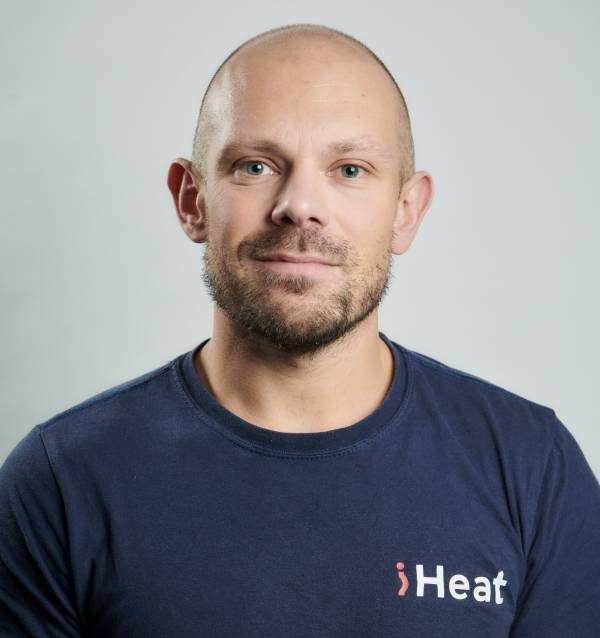

Written by Stephen Day
Gas Safe Engineer
Updated: 30th May, 2025
Boiler dry cycling occurs when a boiler frequently turns on and off without a demand for heat. This often happens in commercial boilers. It leads to energy waste as the boiler operates to maintain its internal temperature despite no heating requirement from the building.
Get a new boiler quote, save up to £550 per year (0% APR available).
Boiler dry cycling can be a hidden energy waster in many heating systems. This phenomenon occurs when a boiler repeatedly turns on and off without effectively heating the space. Essentially, boiler dry cycling wastes fuel because the heat produced does not match the amount needed by the building.
This issue often arises when boilers are over-specified or not properly adjusted, leading to inefficiencies and unwanted fuel consumption. Many buildings may have this problem unknowingly, resulting in higher energy bills and a larger carbon footprint. Awareness and understanding of dry cycling are key to addressing it.
Addressing boiler dry cycling is crucial for those looking to improve energy efficiency. By recognising the signs and implementing solutions, significant savings can be achieved. Exploring effective strategies can ensure better performance and lower energy costs.
Get a quote in 60 seconds, fitted as fast as next day!
0% APR finance available.
Boiler dry cycling occurs when a boiler frequently turns on and off without a demand for heat. This often happens in commercial boilers. It leads to energy waste as the boiler operates to maintain its internal temperature despite no heating requirement from the building.
This issue typically arises because boilers are designed to handle maximum loads during cold conditions. When the actual demand is low, the boilers run at partial loads. This inefficiency can result in frequent cycling and increased fuel consumption.
Standing Losses: Heat escapes from the boiler casing and flue, causing the temperature to drop.
Temperature Sensors: These sensors detect minor temperature changes, causing the boiler to fire unnecessarily.
Energy Waste: It can account for a significant portion of a building’s energy consumption.
Addressing dry cycling is important for enhancing boiler efficiency. Proper control systems can minimise energy loss by detecting when the boiler should operate, thus reducing unnecessary cycling.
To mitigate dry cycling, it's crucial to select the right boiler size for the building's needs. Additionally, implementing smart controls and regular maintenance can help ensure efficient operation.
Boiler dry cycling happens when a boiler starts up unnecessarily. Standing losses are a major cause. Heat escapes through the boiler casing and flue. This lost heat triggers the boiler to restart, even when there is no true need for additional warmth in the building.
Another factor is boiler load optimisation. When boilers are not well-suited for the heating demand, they cycle. If a boiler is too powerful for a building's needs, it causes frequent on-off cycling.
In commercial buildings, inappropriate boiler size leads to increased energy consumption. Many energy managers face this issue, as oversized boilers operate inefficiently.
Heating demand fluctuations can also play a role. When the external temperature changes rapidly, boilers may cycle more as they try to adjust to the new conditions. Boilers attempt to maintain a consistent indoor temperature, possibly resulting in unnecessary firing.
Energy use in commercial properties can be heavily affected by dry cycling, wasting significant amounts of fuel. In some cases, it can consume up to 25% of the fuel without providing any useful heat output. It also contributes to wasted energy consumption as the heat produced does not benefit the heating system.
Dry cycling can be reduced by implementing better control systems. These systems help in monitoring the heating needs and adjusting the boiler's operation accordingly, thus avoiding unnecessary cycling.
Energy managers must address these causes to enhance efficiency and reduce energy waste. Doing so minimises operational costs and environmental impact. Properly tuned boilers lead to better energy savings and performance.
Boiler dry cycling occurs when a boiler frequently turns on and off, even when the building doesn't need more heat. It's important to spot this issue as it can lead to unnecessary energy usage.
Look for signs of frequent boiler activation without a corresponding drop in room temperature. This can indicate that the system is trying to recover its standing losses rather than responding to actual heating needs.
Monitor the flow and return temperatures of the boiler. If the return temperature is frequently high, it may mean the boiler is firing just to maintain its internal temperature rather than to provide space heating. This is a clear sign of dry cycling.
Observe the boiler's behaviour during low system load periods, like mild weather days. If the boiler cycles on and off despite low demand, this might point towards dry cycling.
Check if the boiler sequencing system is functioning properly. A poorly set sequence can cause frequent cycling by not efficiently distributing the heating load among multiple boilers.
Open windows or doors, or thermostat settings that are too high can contribute to excess cycling. Adjust these to see if cycling decreases.
Inspect for poor boiler performance or if the boiler is oversized for the building's needs. An oversized boiler can cause cycling because it heats up quickly and then shuts off.
By observing these patterns, one can identify and address boiler dry cycling, ensuring more efficient energy use.
Boiler dry cycling can lead to significant problems for both the system and the environment.
Wasted Energy: When boilers cycle on and off without completing a full heating cycle, a lot of energy is wasted. This happens because each start-up requires more energy than simply maintaining a stable temperature.
Reduced Boiler Efficiency: Frequent cycling means the boiler does not run at its most efficient level. Running constantly at partial load can decrease the overall efficiency of the system.
Increased Gas Consumption: As the boiler starts and stops repeatedly, it consumes more gas than necessary. This leads to higher gas bills and greater expenditure over time.
Carbon Emissions: With increased gas consumption comes a rise in carbon emissions. This has a direct impact on the environment, contributing to global issues like climate change.
Wear and Tear: Dry cycling increases the wear and tear on boiler components. This can lead to more frequent maintenance requirements and a shorter lifespan for the boiler.
Temperature Imbalances: Buildings may experience uneven heating, leading to discomfort for occupants. Rooms may become too warm or remain cold, despite having the boiler switched on.
Addressing these issues is vital for achieving better energy efficiency and reducing unnecessary costs. By understanding these problems, you can create solutions to prevent boiler dry cycling.
Addressing boiler dry cycling often involves assessing the control systems and maintenance of the boiler. Actions can range from adjusting existing controls to incorporating advanced solutions like Building Energy Management Systems (BEMS) and intelligent control strategies.
Some steps to fix dry cycling issues can be tackled as a do-it-yourself project. Homeowners or building operators can begin by reviewing the thermostat setting. Ensuring it matches the building's heating needs is crucial. Adjusting faulty thermostats or repositioning them to avoid triggers from direct sunlight can help.
Cleaning or replacing air vents might improve the situation. Blocked vents can cause inefficiencies, leading the boiler to cycle unnecessarily. Clearing any obstructions ensures that air flows correctly, which can reduce dry cycling.
If comfortable dealing with boiler adjustments, checking the pressure levels or resetting the boiler can sometimes stop dry cycling. However, care should be taken to follow the manufacturer's manual when performing these checks.
For more technical issues or persistent dry cycling, a Gas Safe Engineer should be consulted. They can evaluate the boiler's efficiency and identify issues that a layperson might miss. Installation of BEMS or other retrofit controls should be handled by professionals to ensure proper setup.
Implementing a weather compensation system or intelligent load optimisation can significantly improve boiler performance. A professional evaluation can determine if these solutions fit the building's needs.
Complex issues like incorrect sizing of the boiler require expert inspection. A BMS engineer can offer insights into incorporating a smarter control strategy that minimises dry cycling. Calling in experienced engineers ensures installations meet safety and efficiency standards.
When deciding if a new boiler is necessary, several factors should be considered. Age is a significant indicator. Boilers over 15 years old might not be as efficient as newer models.
Efficiency matters for energy savings and carbon reduction. An older boiler may contribute significantly to energy bills and carbon emissions. Newer models usually offer improved performance and sustainability features.
It is also essential to monitor for signs of frequent dry cycling. If the boiler fires repeatedly without a genuine need for heating, it wastes energy. A professional can assess whether this is due to a flaw or outdated technology.
Evaluate the cost of repairs versus replacement. If repairs are frequent and costly, investing in a new, more efficient boiler could be a smarter choice.
Switching to modern boilers can support energy savings and sustainability goals. Models with advanced technology often offer better controls and efficiency. This helps in reducing both running costs and environmental impact.
Consider the importance of size and design. Make sure the new boiler suits the home’s heating demands. An expert can guide homeowners through the process, ensuring an appropriate and efficient choice.
Finally, consult with a qualified heating professional. They can perform an assessment and offer recommendations, ensuring the new boiler meets individual, financial, and environmental needs.
Get a quote in 60 seconds, fitted as fast as next day!
0% APR finance available.
Last updated: 30th May, 2025

Written by Stephen Day
Gas Safe Engineer at iHeat
Stephen Day is a Gas Safe registered and FGAS certified engineer with over 20 years of hands-on experience in the heating, cooling, and renewable energy industry, specialising in boiler installations, air conditioning, and heat pump systems.
LinkedInArticles by Stephen Day are reviewed by iHeat’s technical team to ensure accuracy and reliability.

12th December, 2025
The best electric combi boilers in 2025 include models from Electric Heating Company, Heat...
 Read Article
Read Article

12th December, 2025
The Vaillant F22 fault means your boiler pressure is too low and needs topping up.
 Read Article
Read Article

12th December, 2025
A combi boiler should be around 1.0 to 1.5 bar when cold and up to about 2.0 bar when hot.
 Read Article
Read Article
No obligation. Takes less than 60 seconds.